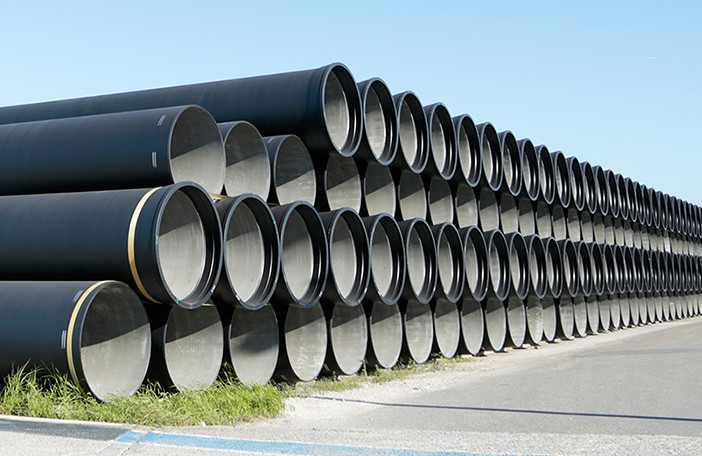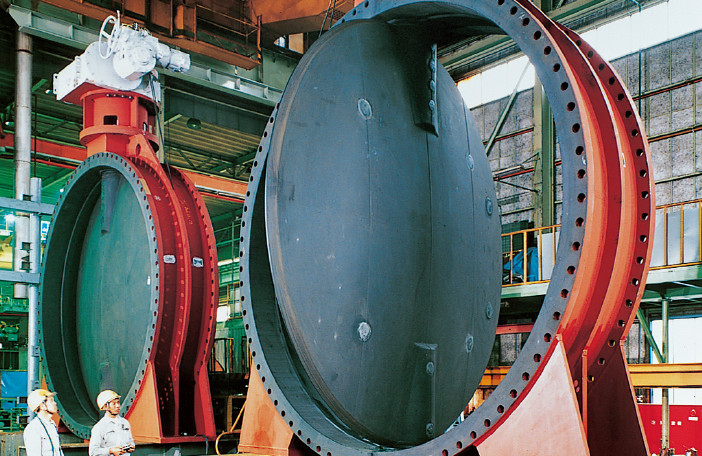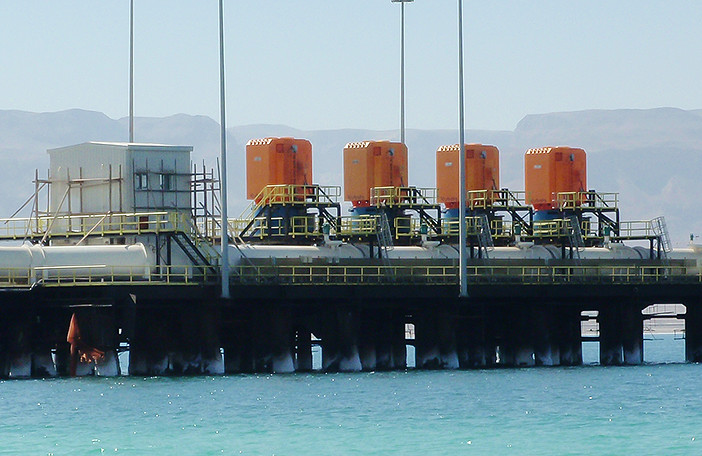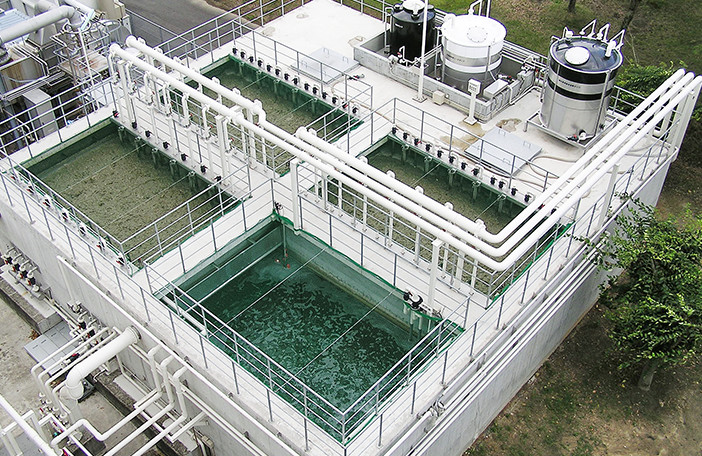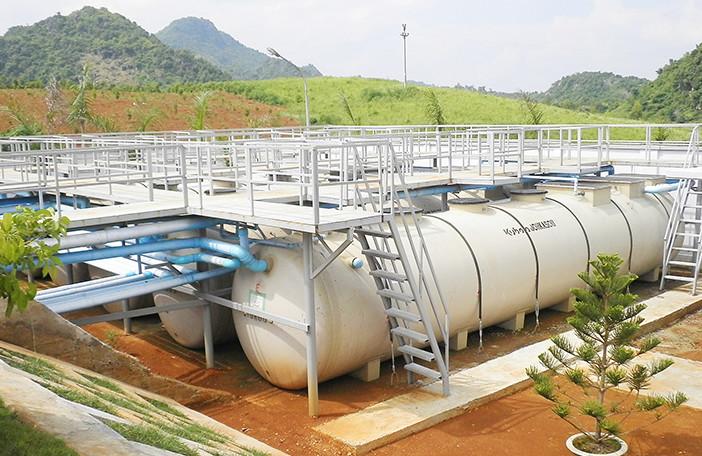Glossary
| Air scouring | A method of physically removing deposits from the membrane surface by taking air into the primary side of the membrane and causing shear force on the membrane surface. |
|---|---|
| Backwash | Feeding water or air in the direction opposite to the filtration to remove deposits on the membrane surface. |
| BOD, Biochemical oxygen demand | The amount of dissolved oxygen utilized by microorganisms. It is an indicator of the amount of organic components contained in water. |
| Bio-fouling | Membrane fouling caused by microorganisms and their metabolites dissolved in the feed water or those growing on the membrane surface. |
| Blocking | Deterioration of the membrane performance due to clogged membrane pores caused by suspended solids or dissolved substances in the feed water. |
| Bubble point | A pressure value where continuous bubbling starts from the secondary (upper) side water when the membrane moistened well with clean water is placed horizontally and the primary (lower) side of the membrane is pressurized with air gradually. |
| Cake layer | A layer on the membrane surface formed by accumulation of activated sludge or other suspended solids. |
| Ceramic membrane | A type of membranes made of sintered inorganic materials such as alumina. |
| Chemical cleaning | Removing foulants from a membrane using chemicals in order to recover permeability of the membrane. |
| Chemical membrane degradation, Chemical membrane deterioration | Deterioration of membrane quality or performance caused by change of the membrane structure due to chemical factors such as hydrolysis or oxidation. |
| Chemical oxygen demand (CODMn) | The amount of dissolved oxygen required for oxidation of organic matters when potassium permanganate is used as oxidant. It is an indicator of the amount of organic matters contained in water. |
| Chemical oxygen demand (CODCr) | The amount of dissolved oxygen required for oxidation of organic matters when potassium dichromate is used as oxidant. It is an indicator of the amount of organic matters contained in water. |
| Chemical resistance | Resistance to a specific chemical. |
| Clean water flux | The amount of clean feed water permeated through a certain unit area of membrane per unit time. It is also called clean water permeate flux. |
| Cleaning | A process of recovering permeability when the membrane or equipment is fouled by organic or inorganic matters. |
| Cleaning-in-place | A method of cleaning a membrane that is still installed in the equipment. |
| Constant flow (rate) filtration | Filtration at a constant filtration rate. |
| Constant pressure filtration | Filtration at a constant trans membrane pressure difference. |
| Critical flux | In membrane filtration, flux increases with increasing transmembrane pressure(TMP), but does not increase above a certain TMP [gel polarization model]. The boundary point of the flux is denoted as the critical flux. In practical use, critical flux is considered as permeate flux above which an irreversible deposits (fouling) appears. |
| Daily average flux | Actual daily flux considering non-operation time during intervals and backwashing processes in thememrane filtration cycle including such intervals and processes is performed in the membrane filtration operation. |
| Dead-end filtration | Filtration mode in which the feed water flows in the direction perpendicular to the membrane surface and the entire volume is filtered. |
| Downstream | The side of filtrate water of a filtration membrane. |
| Dynamic membrane, Dynamically formed membrane | The cake layer on membrane surface formed of a substance in activated sludge. This contributes to improve separation performance of the membrane. |
| External MBR | A MBR system for treating activated sludge where pressurized activated sludge with a pump is fed to membrane equipment which is installed outside a biological reaction tank and thus treated water can be collected. |
| External pressure type | A filtration method by applying pressure from the outside to the inside of a hollow fiber membrane or a tubuler membrane. |
| Feed (water) | Water to be filtrated through a membrane. |
| Filtration | A general term for methods and technologies of removing certain substances from fluid with equipment that prevents their passing. |
| Filtration cycle | A set of membrane filtration processes including filtration, intervals, and backwashing. |
| Flat sheet membrane | A flat or sheet-type membrane. |
| Flow rate | Volume of flow per unit time filtrated through a well-moistened membrane. |
| Flux | The flow rate of filtration per membrane surface area. The unit is usually [m3/(m2・d)] or [m/d], which means a daily permeated amount [m3/d] per 1m2 membrane area. |
| Foulant | Substances causing membrane fouling |
| FI, Fouling Index | → SDI, Silt Density Index |
| Gel layer | The gel layer on membrane surface formed of a substance in activated sludge. |
| Gravity filtration | A filtration method using hydraulic head pressure and a membrane installed inside a water tank. |
| Gross flux | Operating flux during filtration operation in a filtration cycle including filtration, relax, backwash, etc. |
| Hollow fiber membrane, Capillary membrane | A hollow-fiber or tubular membrane with 3 mm or less internal diameter. It is also called as a capillary membrane. |
| Hydrophilic membrane | A membrane made of hydrophillic materials, or a membrane coated with surfactant to improve hydrophillic property of the membrane surface. |
| Hydrophobic membrane | A membrane mede of low hydrophilic materials with low affinity to water. |
| Immersed MBR | → Submerged MBR |
| Inorganic membrane | A membrane made of inorganic materials. |
| In-out type | → Internal pressure type |
| Instantaneous flux | → Gross flux |
| In-situ (In-line) chemical cleaning | A method of cleaning the membrane by injecting chemical solution from the secondary side while the membrane is immersed in the water tank or casing. |
| Internal pressure type | A filtration method by applying pressure from the inside to the outside of a hollow fiber membrane or a tubuler membrane. |
| KUBOTA Submerged Membrane Unit® | Immersed-type membrane equipment with membrane classified as MF. The name is a registered trademark of KUBOTA. |
| MBR, Membrane Bioreactor | A collective term for various activated sludge processes that separate activated sludge from water with a membrane, instead of a conventional clarifer. It is also called MBR. |
| Membrane degradation, Membrane deterioration | Deterioration of membrane quality or performance caused by change of the membrane structure due to chemical, physical or biological factors. |
| Membrane fouling | Deterioration of membrane permeability due to clogging or formation of a fouling layer on the membrane surface and pores. This is caused by substances in the feed water blocked by the membrane during membrane filtration process. It is also called fouling. |
| Membrane Life | A period during which a membrane can deliver an expected performance. |
| Membrane surface area | A membrane surface area that can filtrate fluid satisfactorily. |
| Membrane surface cleaning flow | Fluid movement generated by a pump or blower for stirring fluid around the membrane surface to prevent contamination of the membrane. |
| Microfiltration (MF) membrane | A membrane for the microfiltration method that can remove particulates and microorganisms with dimensions from 0.05 μm to several μm. It is also called as an MF membrane. |
| Micron, Micrometer | 1×10−6 of a meter. |
| Molecular weight cutoff, Cutoff of molecular weight | The lowest molecular weight blocked at a certain cutoff rate. It is an indicator of the separation performance of a filtration membrane. |
| Nano filration (NF) membrane | A membrane with 200 to 1000 D molecular weight cut off for the nanofiltration method that can remove ions and low molecular weight organisms. It is also called as an NF membrane. |
| Net flux | The total flow rate of filtration over 24hours diveded the total membrane surface area. |
| Nominal pore size | A typical pore size for indicating the separation performance of a membrane. The definition varies depending on membrane manufacturers. |
| Organic polymeric membrane | A membrane made of organic materials. It is also called as a polymer membrane. |
| Out-in type | → External pressure type |
| Paper filtration test method | Measurement of filtration properties of activated sludge. |
| Physical membrane degradation, Physical membrane deterioration | Deterioration of membrane quality or performance caused by change of the membrane structure due to physical factors such as consolidation of the membrane. |
| Pressure drop, Pressure loss | Liquid or gas pressure decrease caused by friction or any other force opposite to the traveling direction that has been applied between any two points. |
| Reverse osmosis (RO) membrane | A membrane with 300 Da or less molecular weight cut off for the reverse osmosis method that can remove inorganic salts. It is also called as an RO membrane. |
| Scale | Crystallized deposits of poorly soluble substances that cannot dissolve in the feed water any more. |
| Screen | Solid-liquid separation equipment that can physically remove foreign particles in the feed water using a sieve with opening size from 1 mm to several cm. |
| SDI, Silt Density Index | It has been defined in ASTMD4189 for use in the reverse osmosis membrane method as an indicator of the fouling potential of suspended solids in the feed water. It is called FI (Fouling Index). |
| Side stream MBR | → External MBR |
| SS, Suspended solids | The substance that passes through a 2-mm sieve and remains on a 1-μm filter. |
| Submerged (chemical) cleaning | A method of cleaning a membrane by immersing it directly in a tank filled with chemical solution. It is also called submerged chemical cleaning. |
| Submerged MBR | A MBR system for treating activated sludge where suction filtration or gravity filtration is performed with a membrane equipment submerged in activated sludge and thus treated water can be collected. |
| Submerged type | Suction filtration or gravity filtration with hydraulic head pressure through a membrane immersed in a tank where the feed water is supplied. |
| Suction filtration | Filtration by suctioning the secondary side with a suction pump. |
| Thermo resistance | Resistance to temperature. |
| TMP, Trans Membrane Pressure | Pressure difference between the primary side (feed water side) and secondary side (filtrate water side) of a membrane. |
| Total Nitrogen (T-N) | A general term for various types of nitrogen including ammonium nitrogen, nitrite nitrogen, nitrate nitrogen, and organic nitrogen. |
| Total Phosphorus (T-P) | A general term for soluble phosphorus and suspended (solid) phosphorus. |
| Tubuler membrane | A tubular membrane with an inner diameter of 3 to 5 mm or more. |
| Ultrafiltration (UF) membrane | A membrane for the ultrafiltration method that can remove solute and particulates with molecular weight from 1,000 to 1,000,000 Da. It is also called as a UF membrane. |
| Upstream | The side of feed water of a filtration membrane. In MBR system, the side of activated sludge is the upstream. |
Reference:
Guidelines for Introducing Membrane Technology in Sewage Works: The 2nd Edition, Sewage Technical Meeting on Membrane Technology, March 2011
